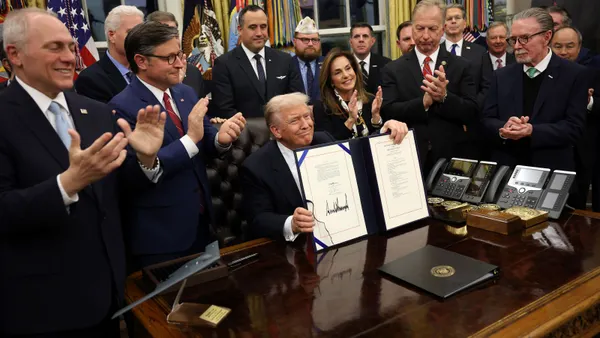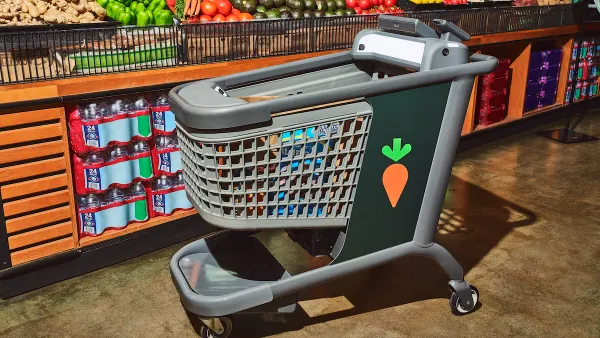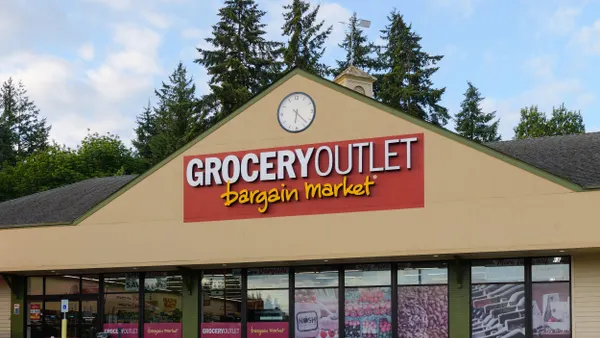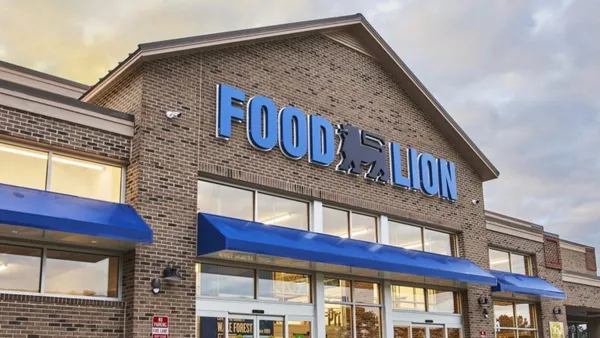Dive Brief:
- Store traffic to several major grocery brands has fully recovered from the early months of the coronavirus pandemic, with Albertsons, Kroger, Publix and Trader Joe’s all seeing year-on-year growth in visits in August, according to a new report by Placer.ai.
- Foot traffic at Whole Foods, the lowest-performing of the eight grocery brands analyzed, was down 22.5% year-over-year in August, but the banner still recorded an upward trend in visit rates last month. As a whole, the grocery segment saw visits per customer down 5.3% for the week beginning August 17, an improvement from July.
- Placer.ai tracks customers’ frequency of retail visits and length of time spent inside stores using cellphone data. Since its last report in May, it saw positive growth in both overall visit numbers and visit duration.
Dive Insight:
Grocery foot traffic has continued on a steady upward trajectory throughout the summer as consumers have grown accustomed to shopping during the pandemic. Although overall customer visits are down 5.3%, Placer.ai noted "much of this was the result of a few outliers that were still seeing significant declines."
The tracking firm's latest report positions Albertsons in the lead for monthly grocery visits, its numbers outpacing the previous August by 9.6%. Duration of store visits also rose from August 2019 at all stores studied except for Whole Foods. Sprouts and Wegmans saw the highest uptick, with visit lengths up 8.8% and 7.3% from 2019, respectively.
Whole Foods’ recovery in foot traffic has been slower than its competitors, according to Placer's data collection, underscoring the chain's ongoing struggles more than three years after being acquired by Amazon.
But store traffic doesn't tell the full story at Whole Foods, which is investing heavily in its e-commerce operations. With its major push for delivery before and with the onset of the pandemic, and with its rapid expansion of store pickup, more of the grocer's customers are opting for online ordering.
According to its Q2 earnings report, Amazon’s online grocery sales tripled during the quarter while its physical store sales – most of which were Whole Foods locations – dropped 13%. Even in June, when physical grocers reopened in much of the country, industrywide e-commerce operations saw a 9% rise from the previous month, according to Brick Meets Click and Mercatus.
Placer's findings underscore the strong performance of conventional grocers during the pandemic. Companies like Kroger and Albertsons that were under pressure from smaller, nimbler competitors have seen their large stores and broad assortments, which formerly weighed them down, drawing droves of shoppers. Albertsons CEO Vivek Sankaran said in July that the company gained "several million" new shoppers in the first quarter.
Other store traffic impacts stemming from the pandemic, seen in both the May and August Placer reports, were an uptick in grocery store visits before noon, a corresponding drop off in evening visits and a greater number of shoppers on Fridays — all stemming from more shoppers being homebound, including the millions of Americans now working from home.
Such changes to consumers’ daily routines, and the drop-off in sales at grocery stores in urban business districts, is likely to last well into 2021, and likely beyond. Some companies, such as Nationwide Insurance, Twitter, and Facebook, have already transitioned some or all of their staff to a permanent work-from-home structure, finding that they can save significantly on city-center real estate, eliminate workers’ commutes and keep coronavirus infection fears at bay, without seeing negative drop-offs in company performance.
Working from home routines, and in-store safety measures which grocers have made major investments into in recent months, have evidently made shoppers more comfortable with taking even more time to shop for groceries, another positive sign for the industry.












